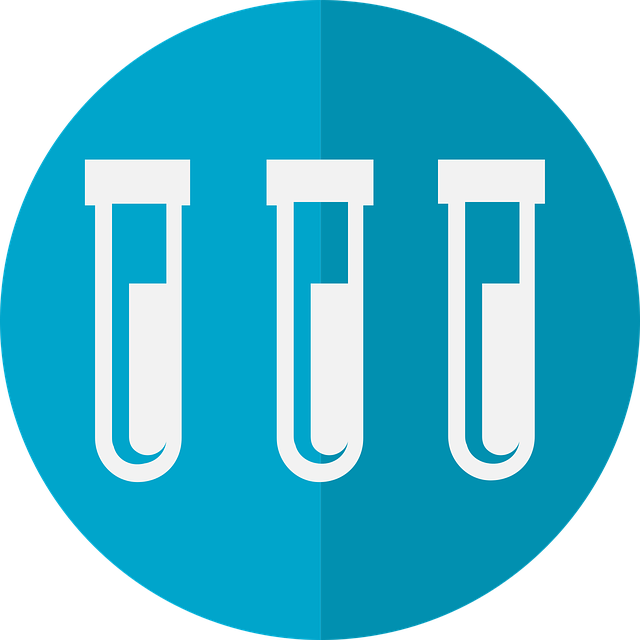Iron deficiency anemia, caused by dietary insufficiency, blood loss, or increased demand, presents with symptoms like fatigue and pale skin. Early diagnosis via simple blood tests like the Testosterone Blood Test UK is crucial. Key indicators include low hemoglobin and ferritin levels, with normal testosterone range in men between 270-1070 nmol/L. Prompt intervention with iron transfusions or lifestyle changes prevents complications for optimal health outcomes.
Iron deficiency anemia is a common yet serious health condition characterized by low iron levels, leading to reduced red blood cell production. This can result in various symptoms such as fatigue, weakness, and shortness of breath. Blood tests play a crucial role in diagnosing this condition. In the UK, a testosterone blood test is often included as part of the evaluation, as low testosterone levels can contribute to anemia. This comprehensive guide explores these aspects, offering insights for patients seeking understanding and treatment options.
- Understanding Iron Deficiency Anemia and its Symptoms
- The Role of Blood Tests in Diagnosing Iron Deficiency Anemia
- Testosterone Blood Test UK: A Comprehensive Guide for Patients
Understanding Iron Deficiency Anemia and its Symptoms
Iron deficiency anemia is a common blood disorder where the body doesn’t have enough healthy red blood cells to carry adequate oxygen to the body’s tissues. This condition can result from a variety of factors, including inadequate dietary intake, blood loss, or increased demand during rapid growth or pregnancy. It’s essential to recognize its symptoms as early detection through simple blood tests like testosterone blood test UK can lead to effective management and treatment.
Common signs include fatigue, weakness, pale skin, shortness of breath, dizziness, headaches, cold hands and feet, and an unusual craving for foods high in iron or a sensation of bitterness in the mouth. In children, anemia may manifest as poor growth, delayed development, or irritability. Prompt diagnosis is crucial to prevent complications, as iron-rich blood transfusions or adjustments in diet and lifestyle can significantly improve symptoms.
The Role of Blood Tests in Diagnosing Iron Deficiency Anemia
In the diagnosis of iron deficiency anemia, blood tests play a pivotal role by providing crucial insights into the presence and severity of this common blood disorder. One of the primary indicators is a low level of hemoglobin, which can be measured through a simple blood test. Hemoglobin is responsible for carrying oxygen in red blood cells, so its deficiency often leads to fatigue, weakness, and shortness of breath—common symptoms associated with iron anemia.
Additionally, specific blood tests like those measuring ferritin levels are essential tools. Ferritin is a protein that stores iron in the body; low ferritin levels can indicate iron deficiency. In the UK, testosterone blood tests are also pertinent as hormonal imbalances, including low testosterone, have been linked to anemia. These tests help healthcare professionals make accurate diagnoses and tailor treatment plans accordingly, ensuring effective management of iron deficiency anemia.
Testosterone Blood Test UK: A Comprehensive Guide for Patients
In the UK, a testosterone blood test is a simple and effective way to assess your hormone levels. This test is particularly relevant for individuals experiencing symptoms associated with low testosterone, such as fatigue, decreased muscle mass, and reduced libido. It’s important to note that while this test provides valuable information, it should be interpreted by a healthcare professional who can consider your medical history and overall health picture.
The process involves taking a small sample of blood, usually from a vein in your arm, and sending it to a laboratory for analysis. Test results are typically measured in nanomoles per litre (nmol/L) or nanograms per decilitre (ng/dL). The normal range can vary slightly between laboratories but generally falls within 270-1070 nmol/L for adult males. Any reading significantly below this range may indicate low testosterone levels, prompting further investigation and potential treatment options.
Iron deficiency anemia is a common but treatable condition, and blood tests play a pivotal role in its early detection. In the UK, understanding the importance of a testosterone blood test can be key for accurate diagnosis, especially as it relates to overall health and well-being. By combining knowledge of symptoms and the use of appropriate diagnostic tools like the testosterone blood test, individuals can ensure timely intervention and effective management of iron deficiency anemia.
